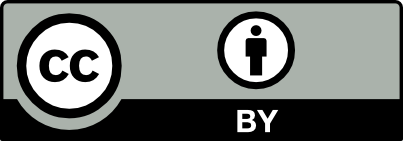Symptomatic Covid-19 disease (as caused by SARS-CoV-2 virus) is observed in 2.5 percent of infected individuals [2] indicating an individual variability in the clinical presentation. Among the epidemiological and clinical features of Covid-19, the following features are of special interest for understanding the patho-physiolology, namely: (1) in outpatients with favorable outcome : neurological/psychiatric disorders, especially loss of sense of smell which is specific of the disease and (2) in hospitalized older patients with a poor prognosis : systemic hyperinflammatory syndrome with increased levels of circulating cytokines and atypical acute respiratory distress syndrome with loss of neurological control of lung perfusion regulation and hypoxic vasoconstriction [3]. This raises the issue of the basis of inter-individual variability for the susceptibility to infection.
The nAChR appears as a hypothetical clue for the main clinical manifestations of Covid-19. It is accepted that the angiotensin converting enzyme 2 (ACE2), represents the principal receptor molecule for SARS-CoV-2 [4, 5, 6]. ACE2 is expressed at the transcriptomic level in the lung, the small intestine and colon, in the kidney, in the testis, in the heart muscle and in the brain, yet the protein is not detected in the lung [7]. In the brain, ACE2 is expressed in both neurons and glia and particularly present in the brain stem and in the regions responsible for the regulation of cardiovascular functions, including the subfornical organ, paraventricular nucleus, nucleus of the tractus solitarius, and rostral ventrolateral medulla [8]. Additional receptors or co-receptors are, however, not excluded. The relationship between nicotine and ACE2 has been explored in the framework of cardiovascular and pulmonary diseases [9]. Accordingly, in the ACE/ANG II/AT1R arm, nicotine increases the expression and/or activity of renin, ACE and AT1R, whereas in the compensatory ACE2/ANG-(1–7)/MasR arm, nicotine down regulates the expression and/or activity of ACE2 and AT2R, thus suggesting a possible contribution of acetylcholine receptors in ACE2 regulation. This possibility has not yet been explored in the framework of viral neuroinfections.
There is strong evidence for a neurotropic action of SARS-CoV-2 infection. It has been demonstrated that β-coronaviruses to which the SARS-CoV-2 belongs, do not limit their presence to the respiratory tract and have been shown to frequently invade the CNS [10]. This propensity has been convincingly documented for the SARS-CoV-1, MERS-CoV and the coronavirus responsible for porcine hemagglutinating encephalomyelitis (HEV 67N). In light of the high similarity between SARS-CoV-1 and SARS-CoV-2, it is quite likely that SARS-CoV-2 also possesses a similar potential. Neuroinfection has been proposed to potentially contribute to the pathophysiology and clinical manifestations of Covid-19 [10] with the neuroinvasive potential of SARS-CoV-2 suggested to play a role in the respiratory failure of Covid-19 patients [11, 12]. Our nicotinic hypothesis proposes that the virus could enter the body through neurons of the olfactory system and/or through the lung leading to different clinical features with different outcome, and contrasts with the currently accepted view that ACE2 is the principal receptor of SARS-CoV-2 for its entry into cells.
As mentioned, loss of sense of smell frequently occurs in Covid-19 patients [13]. Furthermore, several studies have reported that some patients infected with SARS-CoV-2 show neurologic signs such as headache (about 8 %), nausea and vomiting (1 %) [11]. More recently, a study of 214 Covid-19 patients [14] further found that about 88 % (78/88) of the severe patients displayed neurologic manifestations including acute cerebrovascular diseases and impaired consciousness. Based on an epidemiological survey on Covid-19, the median time from the first symptom to dyspnea was 5.0 days, to hospital admission was 7.0 days, and to the intensive care was 8.0 days [15]. Therefore, the latency period may be adequate for the virus to enter the nervous system, invade the brain stem and affect the medullary neurons of the respiratory centers. However, variability of the neurological signs was observed with patients having anosmia, showing in general a mild evolution without pulmonary attack, in contrast with those without anosmia suggesting a diversity in the mode of proliferation and /or progression of the virus.
More than 20 years ago, Mohammed, Norrby & Kristensson [16], in a pioneering study, showed with a broad diversity of viruses (Poliovirus, Herpes simplex virus, West Nile virus , Vesicular Stomatitis Virus, influenza H1N1 virus [17]), that viruses enter the olfactory epithelium and progress first through the olfactory pathway in an anterograde direction and then in a retrograde manner to the reticular neurons projecting to the olfactory bulbs, the median raphe neurons (serotoninergic) and the ventral and horizontal diagonal band (cholinergic) [16, 18]. This olfactory infection route scheme [18] has been recently extended to Covid-19 infection [2, 11]. To further investigate the molecular aspects of Covid-19 propagation in the brain and its pharmacology, we have been aided by abundant studies on rabies virus (RABV) a negative polarity, single-strand RNA virus that is distinct from the coronaviruses [18, 19, 20]. nAChRs were shown to be the first receptors for RABV [21]. Structural studies further revealed that a short region in the ectodomain of the rabies virus glycoprotein shows sequence similarity to some snake toxins [20, 22] that were initially used to isolate the nAChR from fish electric organs [23]. These snake toxins [24] are known to bind with high affinity and exquisite selectivity to the peripheral muscle receptor, while also to some brain receptors [25, 26]. The neurotoxin-like region of the rabies virus glycoprotein inhibited acetylcholine responses of α4β2 nAChRs in vitro, as did the full length ectodomain of the rabies virus glycoprotein [20]. The same peptides significantly altered a nAChR elicited behaviour in C. elegans and increased locomotor activity levels when injected into the CNS of mice [20]. The nAChR thus plays a critical role in the host-pathogen interaction in the case of the RABV. Furthermore, a broad variety of nAChR oligomers are distributed throughout the brain, including the reticular core neurons and the spinal cord, with the α4β2 and α7 nAChR oligomers being the most frequent [27]. The hypothesis we wish to explore is to what implications these data may hold for SARS-CoV-2 infection and we suggest a strong role of nAChR in the disorder.
The nAChR pathway is hypothesized to be engaged in the Covid-19 inflammatory syndrome. The nervous system, through the vagus nerve, can significantly and rapidly inhibit the release of macrophage TNF, and attenuate systemic inflammatory responses [28]. This physiological mechanism, termed the ‘cholinergic anti-inflammatory pathway’ has major implications in immunology and in therapeutics. The cytokine production of macrophages—one of the main cell types found in the bronchoalveolar fluid—is under the physiological control of auto/paracrine acetylcholine through their nAChRs [29]. Following dysregulation of macrophage nAChRs, the profile of cytokines massively secreted include Il1, Il6, TNF et Il18. This cytokine profile shows striking analogies with the cytokine storm syndrome, leading to the hyperinflammatory syndrome described in a subgroup of Covid-19 patients [30]. Systemic coagulopathy with venous and arterial thrombosis is one of the critical aspects of the morbidity and mortality of Covid-19. In line with our hypothesis, one should note that hematopoietic α7-nAChR defficiency increases platelet reactive status, which could explain the thrombogenic presentation of Covid-19 [31]. Although selective cytokine blockers (eg, IL1-receptor antagonist anakinra or anti-IL6 tocilizumab) have been proposed for the control of Covid-19 cytokine storm, their efficacy is still to be explored. Interestingly, α7 agonists, including nicotine, have proven to be effective in reducing macrophage cytokine production and inflammation in animal models of pancreatitis [32] and peritonitis [33]. In this setting, a nicotinic treatment that might possibly antagonize the blocking action of SARS-CoV-2 on the AChR through a possible modulation of the ACE2 – nAChR interaction, would act earlier than anti-cytokine therapies. nAChR modulation by Covid-19 might tentatively account for the hyperinflammatory features observed in a subgroup of Covid-19 patients, mimicking bona fide the macrophage activation syndrome.
Of note, our hypothesis could explain the high prevalence of obesity and diabetes mellitus observed in severe forms of Covid19. The diminished vagus nerve activity previously described in these two illnesses could be potentiated by the Covid-19 elicited nicotinic receptor dysregulation, leading to a hyperinflammatory state often reported in obese patients [29].
nAChRs are present in the lung epithelium. The non-neuronal cholinergic system contributes to the regulation of cell functions such as cell-cell interaction, apoptosis, and proliferation and it is well established that human bronchial epithelial cells contain nAChRs. The airway epithelium expresses α3, α4, α5, α7, α9, β2, and β4-nAChRs subunits [34, 35, 36, 37] and their contribution has been discussed in the framework of airway epithelial basal cell proliferation-differentiation and their alteration in lung cancers [38]. These nAChRs are mentioned here as possible targets of Covid-19 infection of the lung, which would take place concomitantly with, and/or as a consequence of, the neuro-infection. Additionally, nAChRs are involved in lung perfusion regulation, which seems to be disrupted in the atypical acute respiratory distress syndrome reported in Covid-19 patients [3].
A potential protective effect of smoking and of nicotine on SARS-CoV-2 infection has been noted. Until recently [39], no firm conclusions could be drawn from studies evaluating the rates of current smokers in Covid-19. All these studies [40, 41, 42, 43, 44, 45, 46, 47, 48], although reporting low rates of current smokers, ranging from 1.4 % to 12.5 %, did not take into account the main potential confounders of smoking including age and sex. In the study that two of us are reporting [1], the rates of current smoking remain below 5 % even when main confounders for tobacco consumption, i.e. age and sex, in- or outpatient status, were considered. Compared to the French general population, the Covid-19 population exhibited a significantly weaker current daily smoker rate by 80.3 % for outpatients and by 75.4 % for inpatients. Thus, current smoking status appears to be a protective factor against the infection by SARS-CoV-2. Although the chemistry of tobacco smoke is complex, these data are consistent with the hypothesis that its protective role takes place through direct action on various types of nAChRs expressed in neurons, immune cells (including macrophages), cardiac tissue, lungs, and blood vessels.
Mechanisms engaged in Covid-19 as nAChR disease might be tentatively suggested. There is structural evidence supporting the hypothesis that SARS-CoV-2 virus is a nicotinic agent. The recently reported X-ray structure of the RABV glycoprotein (G) ectodomain [49] shows that the region corresponding to the neurotoxin-like peptide is exposed at the G surface, in agreement with the fact that this region is part of the major antigenic region II of RABV [50]. The recently published cryo-EM structure of the trimeric SARS-CoV-2 spike (S) protein [51, 52] revealed an insertion with respect to that of SARS-CoV-1, in a loop that is disordered in the reported structure, and which has a polybasic sequence that corresponds to a furin site. Importantly, this exposed loop of the SARS-CoV-2 S protein also contains a motif that is homologous to that of snake neurotoxins and to the RABV neurotoxin-like region (Figure 1). This observation supports the hypothesis that SARS-CoV-2 virus itself is a nAChR blocker.
The neurotoxin motifs. Amino acid sequence alignment of the motifs found in toxins from snakes of the Ophiophagus (cobra) and Bungarus genera, in G from three RABV strains and in S from SARS-CoV-2.
Nicotine may be suggested as a potential preventive agent against Covid-19 infection. Both the epidemiological/clinical evidence and the in silico findings may suggest that Covid-19 infection is a nAChR disease that could be prevented and may be controlled by nicotine. Nicotine would then sterically or allosterically compete with the SARS-CoV-2 binding to the nAChR. This legitimates the use of nicotine as a protective agent against SARS-CoV-2 infection and the subsequent deficits it causes in the CNS. Thus, in order to prevent the infection and the retro-propagation of the virus through the CNS, we plan a therapeutic assay against Covid-19 with nicotine (and other nicotinic agents) patches or other delivery methods (like sniffing/chewing) in hospitalized patients and in the general population.
In conclusion, we propose, and try to justify, the hypothesis that nAChRs play a critical role in the pathophysiology of SARS-CoV-2 infection and as a consequence propose nicotine and nicotinic orthosteric and/or allosteric agents as a possible therapy for SARS-CoV-2 infection. Interestingly, ivermectin, which has been recently shown to inhibit the replication of SARS-CoV-2 in cells in vitro [53], is a positive allosteric modulator of α7 nAChR [54]. The nicotinic hypothesis might be further challenged by additional clinical studies and by experimental observations determining whether SARS-CoV-2 physically interacts with the nAChR in vitro, for instance by electrophysiological recordings, high resolution EM and by animal model studies. Further work should also specify the still enigmatic relationships between ACE2 and nAChRs in the nervous system.
One should not forget that nicotine is a drug of abuse [55] responsible for smoking addiction. Smoking has severe pathological consequences and remains a serious danger for health. Yet under controlled settings, nicotinic agents could provide an efficient treatment for an acute infection such as Covid-19.
Acknowledgments
We would like to specially thank Pr. Serge Haroche for establishing the contact between JPC and ZA. We thank Dr. Pablo Guardado Calvo (Institut Pasteur, Paris) for the amino acid sequence analysis of the neurotoxin motif, Pr. Florence Tubach for fruitful discussions, Pr. Gérard Orth for valuable support and discussions, Pr. Daniel Louvard and Pr. Henri Korn for encouragements. JPC acknowledges useful exchanges with Dr. Abdul Mohammed and Dr. Kister Kristensson at early stages of the reflection and the Pasteur Institute shared discussions network organized by the Neuroscience Department and its former Chairman Pr. PM Lledo. We thank Dr. Kurt Sailor for carefully editing the text.
Competing financial interests
The authors declare no competing financial interests.




 CC-BY 4.0
CC-BY 4.0